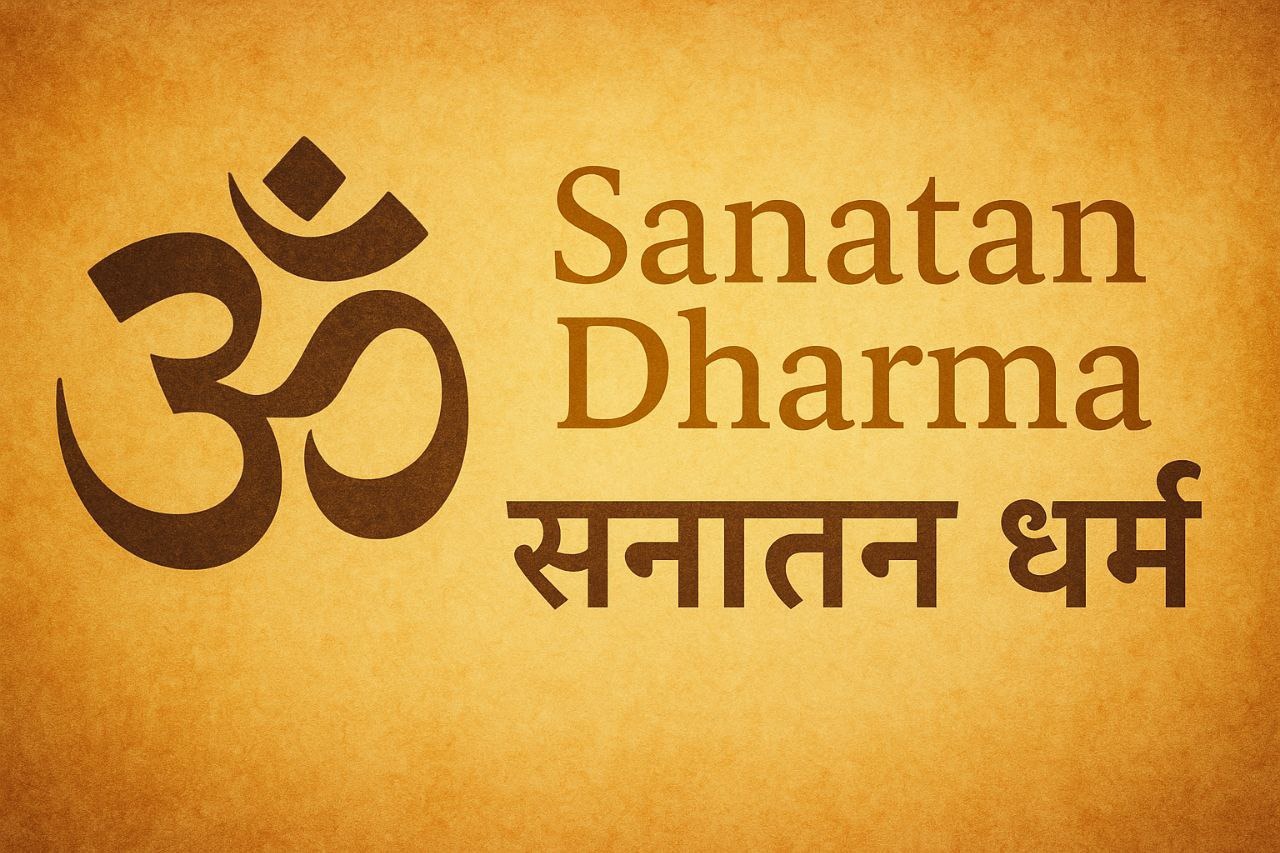Dharma & Ecology ~ Earth as Divine

Reuniting Dharma and Nature
In the vision of Sanātan Dharma, the Earth is not just a habitat, it is Bhū Devi, the divine goddess. Trees are not just biological entities, but sacred beings. Rivers are not merely sources of water but revered mothers. This worldview is deeply ecological, grounded in the spiritual understanding that all creation is interlinked, and harming one aspect of it disturbs the cosmic balance (ṛta). In this ancient framework, caring for nature is not optional, it is a dharmic duty.
"The Earth does not belong to us, we belong to the Earth. To violate her is to violate Dharma." ~ Adarsh Singh
Vedic Reverence for Nature
The earliest Vedic hymns revere elements of nature:
Agni (fire), Vāyu (wind), Varuṇa (waters), Pṛthvī (Earth), Āditya (Sun), and Soma (moon) are invoked as deities.
Ṛgveda praises the Earth as the one who "bears all things," indicating an early ecological consciousness.
🌳 Even trees like the Peepal, Banyan, and Tulsi were revered as divine abodes, not out of superstition, but to cultivate a sacred relationship with nature. These trees are also among the highest oxygen producers and natural air purifiers, offering tangible ecological benefits along with spiritual significance.
This way, the spiritual reverence and scientific reality go hand in hand, echoing the Vedic spirit of harmony between the inner and outer worlds.
Dharmic View on Ecology
Dharma refers to harmony, between humans and nature, between consumption and preservation. Ecological care becomes a natural extension of right living.
Key Principles:
1. Ahimsā (Non-violence):
Applied not only to humans but also to animals and the environment.
2. Aparigraha (Non-possessiveness):
Encourages minimalism and avoiding exploitation of natural resources.
3. Yajña (Sacrifice):
Symbolizes giving back to the cosmos what we take, seen in planting, preserving, and sharing.
“Ecology is not a new science in India, it is an old Dharma rediscovered.” ~ Adarsh Singh
Animals in Sanātana Dharma
Cow (Gau) is sacred, not just for milk but as a symbol of selfless giving.
Elephant (Gajā) is associated with Ganesha, wisdom and strength.
Snake (Nāga) represents energy (Kundalinī) and the hidden powers of nature.
The Mahābhārata and Rāmāyaṇa mention forests, animal habitats, and sages living in tune with nature, demonstrating early models of ecological harmony.
Rivers and Sacred Waters
Ganga, Yamuna, Godavari, and others are personified as mothers. Bathing in them is not just a ritual, it’s a symbolic cleansing of inner and outer pollutants.
The ritual of Tarpana done near rivers shows our gratitude to ancestors and nature alike.
Polluting rivers, in this context, is more than environmental neglect, it is a violation of dharma.
Temple Architecture and Ecology
Traditional Indian temples were built using Vāstu Shastra, aligning structures with the Earth's energy fields. Temple gardens, water tanks, and surrounding groves served ecological as well as spiritual functions.
Sacred groves (Dev-vanas) were protected forest spaces around temples.
Deepas (lamps) and homas (fire offerings) used clarified butter and natural materials.
Festivals as Ecological Education
Makar Sankranti marks the sun's northward journey, solar awareness.
Vanamahotsava encourages tree planting.
Nag Panchami, Govardhan Puja, and Gau Puja promote love and protection toward flora and fauna.
These were not just cultural events, they were seasonal ecological rituals, aligning humans with cosmic rhythms.
Modern Dharma, Modern Ecology
As climate change threatens our existence, ancient dharma principles offer sustainable models:
Shift from consumerism to conscious living.
Reconnect rituals with ecological impact (e.g., eco-friendly idols, plastic-free pujas).
Teach children the spiritual value of nature, not just its utility.
Earth as a Living Being: Bhūmī Devi
In scriptures, the Earth is a goddess crying under the weight of human sin (adharma). The Bhāgavata Purāṇa narrates that whenever dharma declines, nature cries out for balance.
Let us remember that to restore Dharma is also to restore the Earth.
“Dharma begins when we realize the trees breathe for us, and we breathe for them. Separation is an illusion.” ~ Adarsh Singh
Serving Mother Earth is Seva
Ecology is not a Western import, it is rooted in the spiritual soil of Bharat. The Earth is not merely to be ‘saved’ but to be worshipped, served, and protected as a manifestation of the Divine.
Let your Dharma be an offering to her, a quiet revolution of conscious living.
“If our spirituality does not embrace the soil, the rivers, the winds, and the animals, it is not Sanātana, it is ego.” ~ Adarsh Singh
Sun Jul 27, 2025
